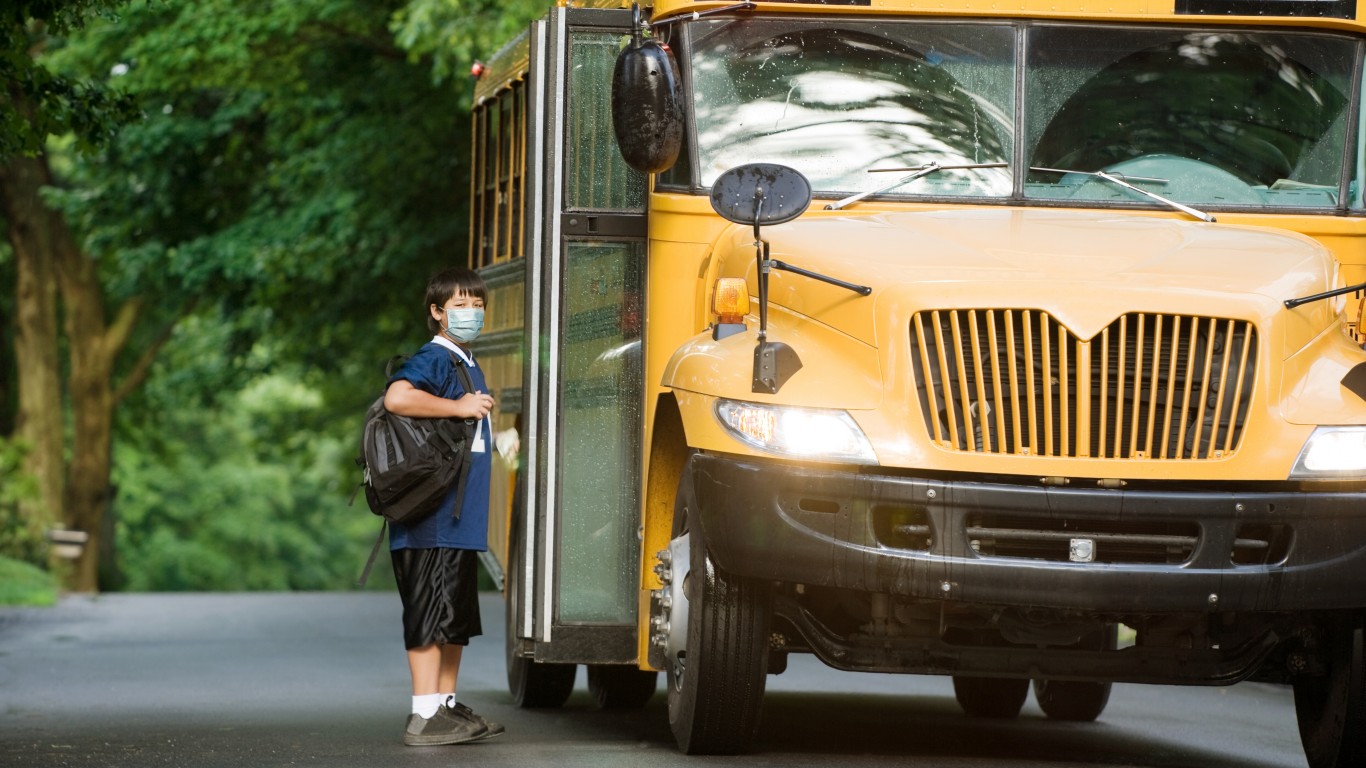Health and Healthcare
The COVID-19 Risk to Children, According to Scientists

Published:

The rate of the spread of COVID-19 had slowed across America. Despite a new surge, increases in daily fatal and confirmed cases are still about half what they were three months ago. Nevertheless, 572,627 Americans had died as of Saturday, which is about 20% of the world’s total. The global death total just moved above a staggering 3 million. Confirmed cases have reached 31,867,374 in the United States, or about 23% of the global number. Hospitalizations, which were over 100,000 a day during the peak wave, have dropped into the thousands.
[in-text-ad]
The Centers for Disease Control and Prevention (CDC) and several media sources show that the numbers of cases have started to rise again in well over half the states in America, currently led by a rapid spread in Michigan. That state recently asked the federal government for additional vaccine doses because of the rising spread of COVID-19 there. The request was denied, but the head of the CDC suggested the state be shut down to resolve the problem.
Much of the country has “opened up,” which has caused worries about a fourth wave of the disease. Just a few weeks ago, the nation’s newspapers were filled with reports of large college parties in Florida with hundreds of people in close proximity without masks. More people flew over the Easter weekend than any other weekend since the start of the pandemic. This kind of activity has led to public health officials predicting that fourth wave.
Variants of the disease are among the dangers epidemiologist and public health officials worry about. At least one, first identified in the United Kingdom, now accounts for most new U.S. cases. This variant also could be more deadly. The CDC currently tracks three variants for the public on its website. It has 20,915 cases of the B.1.1.7 variant reported across all 50 states, as of April 12. There were 453 cases reported of the B.1.351 variant across 36 states and 497 reported cases of the P.1 variant across 31 states. Several other variants have emerged that the CDC does not report on to the public.
The pace of the spread of the disease remains in part a race between vaccinations and the rising number of potentially dangerous variants. So far, 40% of the adult population has received at least one dose of vaccine and 25% are fully vaccinated. While the Pfizer and Moderna vaccines require two shots, the one from Johnson & Johnson requires just a single dose. According to The New York Times, 264,505,725 doses have been delivered in the United States and 209,406,814 of them (79%) have been administered.
The debate over whether COVID-19 prevention rules should be different for children than adults continues. At this point, vaccines have not been widely tested on children under 15. However, vaccine makers have begun to explore whether they can receive approval to provide shots for young teenagers and children.
Another point made regularly is that children tend to be infected less often than adults, and when they are infected, do not tend to get as ill.
Among the most debated issues about children and the pandemic is whether schools should be reopened. Many experts believe that, with appropriate cautions, school environments are relatively safe. Some teachers have resisted reopening, and the debate has become heated in a number of school districts.
New research shows that children are indeed at risk of severe symptoms in a relatively large number of cases. JAMA Network Open recently published a paper on the subject. Medscape summarized the conclusions:
About 12% of U.S. children with COVID-19 were hospitalized in 2020, and nearly a third of those had severe disease that required mechanical ventilation or admission to an intensive care unit …
Researchers examined information from 869 medical centers. Data included 20,700 children ages 18 and younger who came to emergency rooms. A total of 2,430 were hospitalized. Of those, 756 went to ICUs, and a portion of those was put on ventilators. A proportionately high number of these were children Hispanic, Latino and Black.
What does the research show? Certainly that it is a myth that children are safe from the effects of COVID-19.
Click here to see the states where the most people are refusing the COVID-19 vaccine.
The thought of burdening your family with a financial disaster is most Americans’ nightmare. However, recent studies show that over 100 million Americans still don’t have proper life insurance in the event they pass away.
Life insurance can bring peace of mind – ensuring your loved ones are safeguarded against unforeseen expenses and debts. With premiums often lower than expected and a variety of plans tailored to different life stages and health conditions, securing a policy is more accessible than ever.
A quick, no-obligation quote can provide valuable insight into what’s available and what might best suit your family’s needs. Life insurance is a simple step you can take today to help secure peace of mind for your loved ones tomorrow.
Click here to learn how to get a quote in just a few minutes.
Thank you for reading! Have some feedback for us?
Contact the 24/7 Wall St. editorial team.